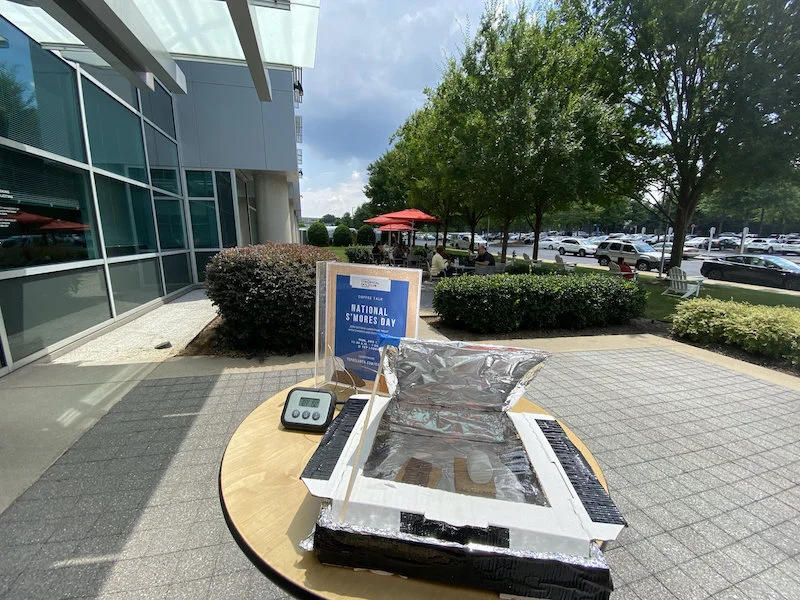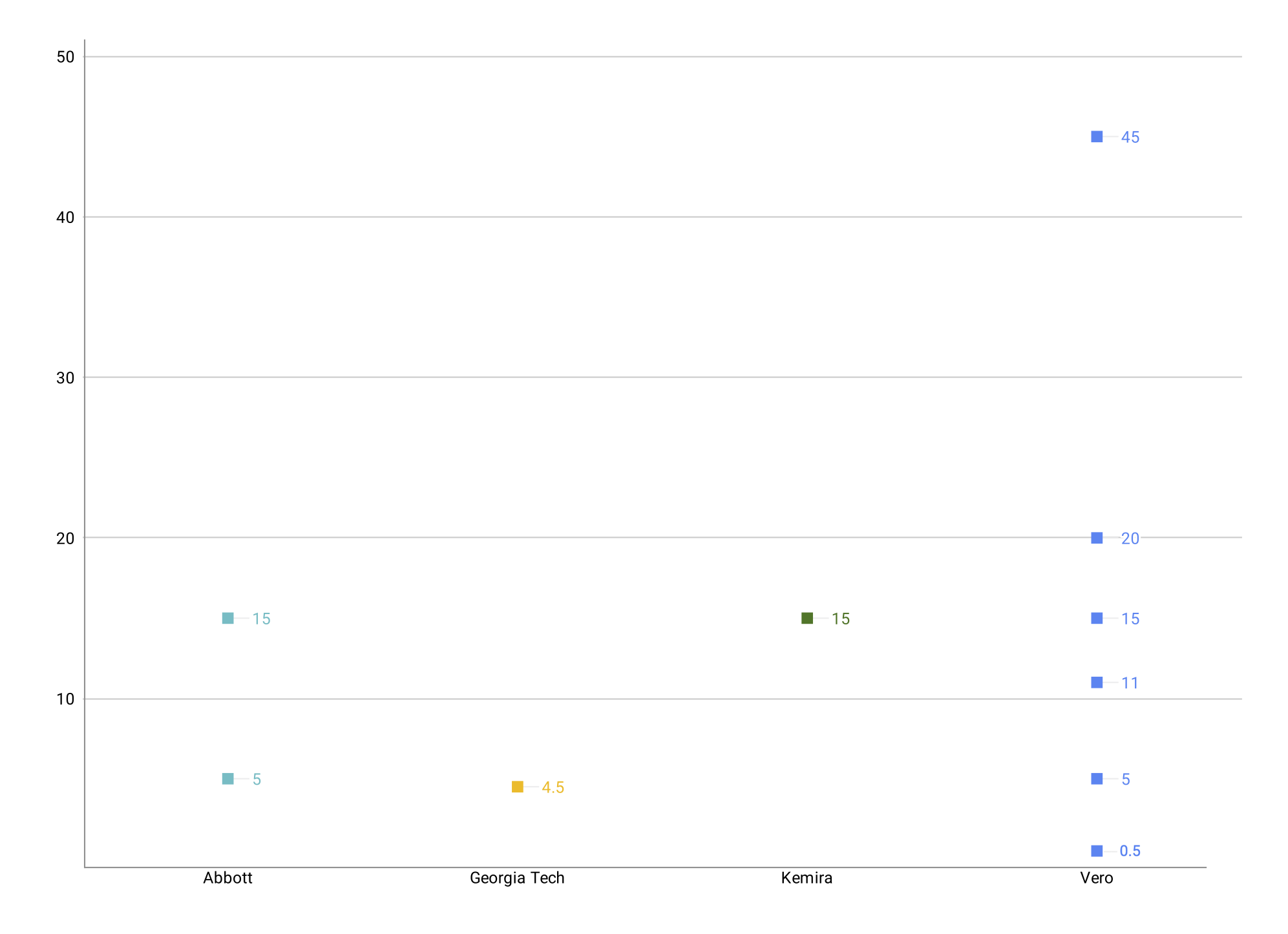TEP Talk: Solar-Powered S’mores
You’ve heard the saying, “it’s hot enough to fry an egg on the sidewalk.” But we wanted to know: does it get hot enough in Atlanta to make a s’more with a solar-powered oven? We decided National S’mores Day was the perfect day to investigate, so we propped up our DIY solar oven at Technology Enterprise Park (TEP) with graham crackers, chocolate bars, and marshmallows in tow.




Stacking marshmallow and chocolate on top of a graham cracker, we asked TEP sweet tooths on their lunch break (in 91-degree heat): "How long do you think it'll take for the chocolate to melt in the solar oven outside?”
Most community members thought that it would take 15 minutes for the sun to melt the Hershey’s brand chocolate molding into oblivion.
TEP Community Hypotheses (in minutes)
Curious to see how hot it would get in the solar oven, we equipped it with a digital thermometer. Though the temperature never reached our hypothesis of 150°F, the highest temperature recorded inside the solar oven was 135°F.
While most TEP community members thought that it would take 15 minutes for the chocolate to liquefy from the heat, we found that it actually took 56 minutes to get to this state. The temperature inside the oven stayed consistently over 100°F, with the lowest temperature at 101°F when the clouds blocked the sun.
Did You Know?
Image Source: Some Mores Recipe from Girl Scout Magazine 1927
The invention of this scrumptious campfire treat is usually credited to Girl Scout Loretta Scott Crew. Her award-winning recipe named "Some Mores" was published in the 1927 Girl Scout handbook.
Want to try this sweet experiment at home? Watch this video to make your own foil-lined solar oven. Let us know how your experiment goes in the comments below!


